VHH Antibodies in Molecular Imaging and Radiopharma
Learn about the advantages of using VHHs for payload delivery and molecular imaging.

Advantages of VHH in
Radio Imaging

Precision Targetting
VHH are physically robust and can be conjugated to radio-isotopes whilst maintaining selective targeting of tumour epitopes enabling versatile application in theranostics.

Rapid Renal Clearance
Due to their small size, VHH are rapidly cleared from the blood through the kidneys. This has an added advantage in a radio imaging context as it limits the prolonged patient exposure to radioactive isotopes.

Access to Solid Tumours
Due to their small size and in vivo stability, VHH can penetrate hostile environments such as the ones in solid tumours. This leads to radio imaging with better resolution and speed.
Isogenica – University of Hull
Radio Imaging Collaboration
Through our collaboration with the University of Hull we are able to demonstrate our VHH’s abilities in radio imaging settings.

Isogenica’s
VHH in Radio Imaging
Current challenges in the utilisation of monoclonal antibodies for molecular imaging include slow blood clearance, slow and low tumour uptake, and poor tissue penetration. This tends to lead to lower-contrast images with higher background signals.
On the other hand, VHH antibodies can be radiolabelled with short-lived radioisotopes and provide high-contrast images within a few hours after injection, allowing early diagnosis and reduced radiation exposure of patients. In addition, radioactively labelled VHH also provide additional benefits in a therapeutic context by providing higher specificity and a greater ability to penetrate tumours.

Figure Taken from Altunay, B., Morgenroth, A., Beheshti, M. et al. HER2-directed antibodies, affibodies and nanobodies as drug-delivery vehicles in breast cancer with a specific focus on radioimmunotherapy and radioimmunoimaging. Eur J Nucl Med Mol Imaging 48, 1371–1389 (2021).
Explore the science behind our antibody discovery platforms
White Paper “Data-Driven Validation of Synthetic VHHs”
 This white paper provides a data-driven validation of Isogenica’s synthetic VHH libraries, powered by Colibra® technology. Designed for biotech and pharmaceutical scientists, it demonstrates how these libraries enhance and accelerate drug discovery, particularly in oncology and immunotherapy. Download
This white paper provides a data-driven validation of Isogenica’s synthetic VHH libraries, powered by Colibra® technology. Designed for biotech and pharmaceutical scientists, it demonstrates how these libraries enhance and accelerate drug discovery, particularly in oncology and immunotherapy. DownloadExtending half-lives of VHH antibodies
 Because VHHs are small, they can be cleared quickly from the bloodstream. This can be a useful feature for some applications, but often a longer plasma half-life is desirable. DOWNLOAD
Because VHHs are small, they can be cleared quickly from the bloodstream. This can be a useful feature for some applications, but often a longer plasma half-life is desirable. DOWNLOADAdvantages of VHH in bi-specifics
 To learn more about the application of VHHs in bi-specifics, we have condensed our expertise into a downloadable Application Note. DOWNLOAD
To learn more about the application of VHHs in bi-specifics, we have condensed our expertise into a downloadable Application Note. DOWNLOADOptimizing CAR-T and T-cell antibody engagers: a role for VHH single domain antibodies
 This whitepaper summarises the clinical and research landscape for CAR-T and T-cell engaging antibody therapies and show how single domain VHH antibodies can be applied to optimise the next generation of these important new therapeutic modalities. DOWNLOAD
This whitepaper summarises the clinical and research landscape for CAR-T and T-cell engaging antibody therapies and show how single domain VHH antibodies can be applied to optimise the next generation of these important new therapeutic modalities. DOWNLOADIsogenica’s PD-L1 VHH as Functional Antagonists
 PD-1 is an immune checkpoint protein expressed on the surface of multiple types of immune cells, including antigen-stimulated T-cells and tumour specific T-cells1. Interaction between PD-1 and its ligands (PD-L1 or PD-L2), is responsible for the regulation of T-cell activation, apoptosis, proliferation and cytokine production. DOWNLOAD
PD-1 is an immune checkpoint protein expressed on the surface of multiple types of immune cells, including antigen-stimulated T-cells and tumour specific T-cells1. Interaction between PD-1 and its ligands (PD-L1 or PD-L2), is responsible for the regulation of T-cell activation, apoptosis, proliferation and cytokine production. DOWNLOADAnti-LRP5/6 VHH inhibits WNT pathway and prevents tumour growth
 VHH are the variable domain of heavy chain only antibodies. They are small in size (~15 kD) and biophysically robust. With tunable half-lives, these antibodies are ideal for targeting inaccessible epitopes, achieving enhanced tissue penetration, multi-target binding and formatting for payload delivery… DOWNLOAD
VHH are the variable domain of heavy chain only antibodies. They are small in size (~15 kD) and biophysically robust. With tunable half-lives, these antibodies are ideal for targeting inaccessible epitopes, achieving enhanced tissue penetration, multi-target binding and formatting for payload delivery… DOWNLOAD